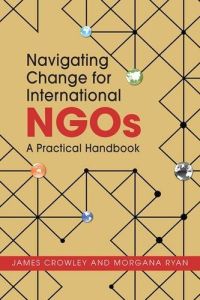Join getAbstract to access the summary!

Join getAbstract to access the summary!
Morgana Ryan
Navigating Change for International NGOs
A Practical Handbook
Lynne Rienner, 2016
What's inside?
NGOs need to balance content, context and approach to enact change. How prepared is your agency?
Recommendation
International development experts James Crowley and Morgana Ryan detail the “content, context and approach” that NGO managers must balance when undertaking complex organizational change. They map out how leaders can meet the needs of an NGO’s structure, resources and positioning. They detail how to work with donors, private-sector parties and multiple offices in countries with varied political, economic and social structures. They offer tables and figures to flesh out their concepts and directions for implementation. Though this manual is chock-full of theoretical detail about change, these resources reward a close reading. The authors guide NGOs with multiple offices worldwide, and offer insights also to smaller NGOs with growth potential. This very specific text is targeted to managers and program officers at large international NGOs, who may find it worth sharing with board members or donors.
Summary
About the Author
Business adviser James Crowley and management consultant Morgana Ryan have extensive experience in the private and “international development sectors,” including involvement with Accenture Development Partnerships. They also co-wrote Building a Better International NGO.






















Comment on this summary